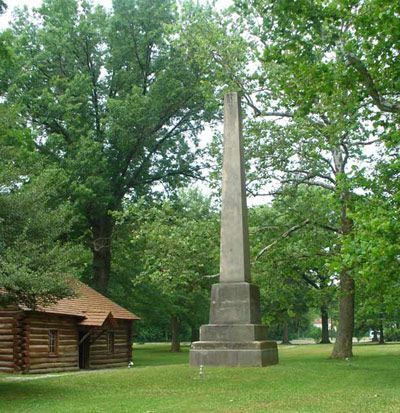The years leading up to 1812 in the Great Lakes were filled with tribes coping with the displacement of their villages, attacks on civilians, and the loss of resources and land. As early as the Revolutionary War, Great Lakes tribes began to wage war against American incursion, with conflicts spanning from New York to Wisconsin.
The escalation of violence and the need to repay grievances in bloodshed spelled inevitable tribal involvement in the War of 1812.

The years between the Revolutionary War and the War of 1812 were not peaceful: the American army was dealt its worst defeat ever between tribal nations and American forces, at the hands of tribal warriors led by Little Turtle of the Miami and Blue Jacket of the Shawnee. St. Clair’s defeat in 1791 saw the American army lose approximately 1,000 men: three times the number lost during General Custer’s better-known defeat at Little Bighorn in 1876.
Between 1774 and 1794, Indian villages in New York, Pennsylvania, Indiana and Ohio were constantly attacked by the American army and militias. The Shawnee, Delaware, Iroquois, Miami, Odawa, Wyandot and Mingo saw unspeakable violence committed against their villages during this time period. Over 100 Indian villages were burned and destroyed, leaving an unknown number of civilian casualties. The most notorious frontier massacres occurred on March 8, 1782 on the Upper Sandusky River in Ohio, at a village known as Gnadenhutten. Over 90 Delaware Indians, the majority women and children, were returning to the village to gather food supplies. These Delaware, known as the Moraviantown Indians, were Christian and pacifists. Upon reaching their village, the Delaware were rounded up by Colonel David Williamson and the Pennsylvania militia. Two out buildings served as slaughter houses where the Indians were led, two at a time, to their execution.
In response to these tensions, the 1795 Treaty of Greenville aimed to end the hostilities that had engulfed the Great Lakes. It was an imperfect agreement not agreed upon by all the tribes, but it ended violence at least temporarily, and established Indian lands. But American expansion quickly nullified the agreement.
By 1800, numerous tribes from the eastern United States were pushed out of their homelands, due to an exploding American population hungry for land. The Shawnee and Delaware were two such tribes that were continually forced west by American expansion and attacks on their villages by American militia and frontiersmen. Tired of being displaced, the Shawnee, Delaware, Wea, Wyandot and other tribes made their last stand in Indiana and Ohio.
Atrocities against Indian villages in the Great Lakes at the hands of American forces would continue. Warriors would remember what had happened to their villages and those of their kin, such as the Gnadenhutten massacre, resulting in revenge killings on American settlements that further exacerbated a deteriorating relationship. Two such incidents in 1813, the attack on Fort Dearborn and the aftermath of the Battle of the River Raisin, saw American civilians and prisoners perish at the hands of vengeful Great Lakes warriors – ultimately at great cost to the nations. The escalation of violence and the need to repay grievances in bloodshed spelled inevitable tribal involvement in the War of 1812.
Last updated: March 6, 2015
